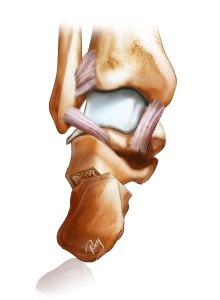Flatfoot (also called pes planus) is a foot deformity characterised by the collapse of the arched shape of the foot and a deviation of the heel and the forefoot (valgus of the heel and abduction of the forefoot). It affects nearly 20% of the population in its asymptomatic form and remains a major reason for consulting a specialist.
rendez-vous
Flat foot symptoms and treatments

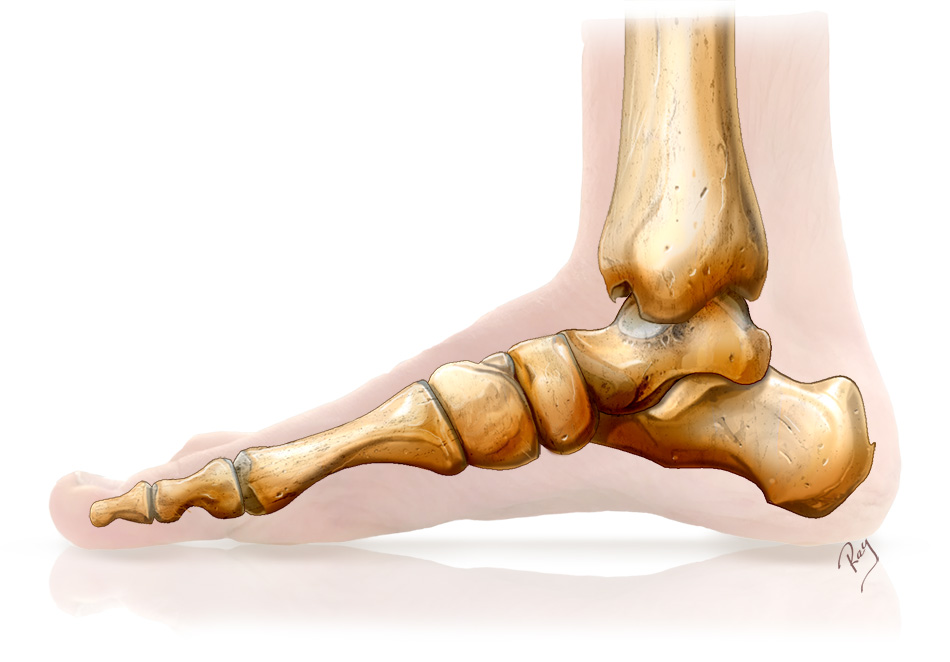
-
Fig. 1
Normal foot
Talus, midfoot and forefoot aligned
-
Fig. 2
Flatfoot
Note the flattening of the calcaneus, the plantar tipping of the talus and the misalignment of the foot bones.
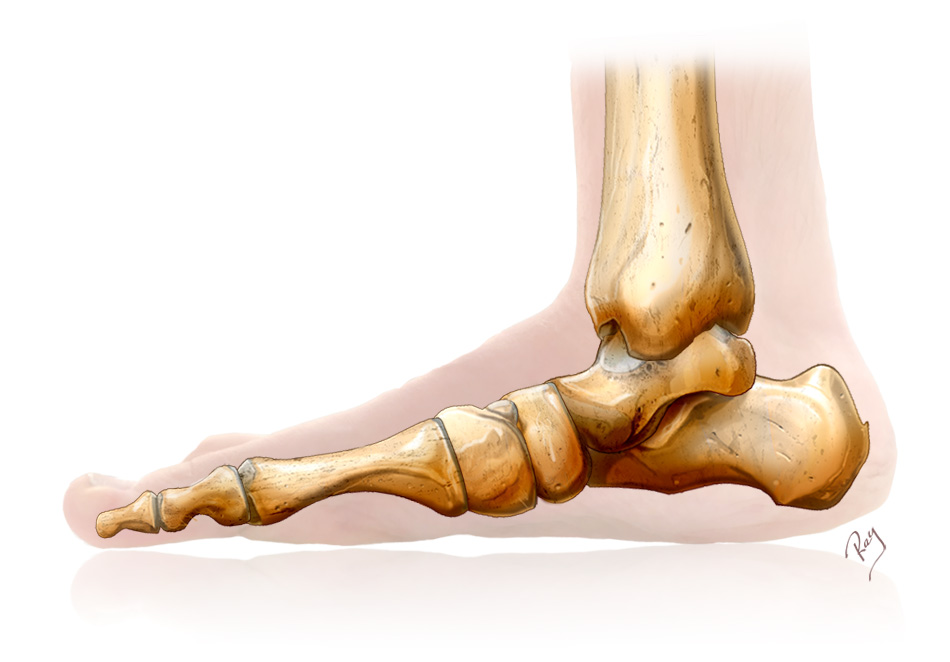
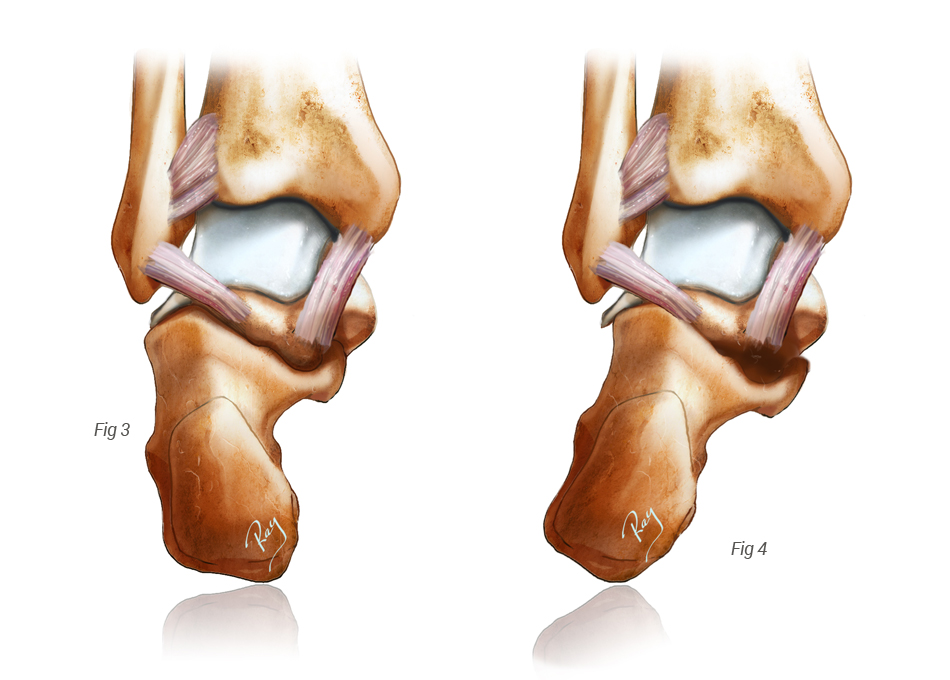
-
Fig. 3
Posterior view. Normal foot, aligned.
-
Fig 4
Outwards deviation of the heel (calcaneal valgus)
It is important to distinguish between different forms of flatfeet:
- Flatfoot in children. Flatfeet in children are normal up to the age of six. This condition is due to muscle and ligament immaturity and corrects spontaneously with growth.
- Congenital flatfoot. Persistent form of flatfoot after childhood. It is usually asymptomatic and requires no specific treatment.
- Acquired (or adult) flatfoot. This is the pathological form of flatfeet. It develops in adulthood and usually causes pain, sometimes severe. This is typically the form that requires treatment and medical support.
The arch of the foot is maintained by a series of anatomical structures. The first of these is a bony structure that ensures the normal alignment in the shape of an arch. Ligament structures help maintain the position of these bones and overcome the crushing effect caused by the body’ weight pressing down on the foot. Finally, several ligaments and muscle structures are actively involved in the shape of the foot. The most important is the posterior tibial tendon, which attaches itself to the middle part of the foot and maintains the plantar arch and alignment of the heel. Any injury to this tendon will cause specific pain in the inner foot and a risk of painful flatfoot.
Clinical presentation
Acquired flatfoot is a common and often poorly tolerated condition. In the early phases, pain occurs at the insertion of the posterior tibial tendon.
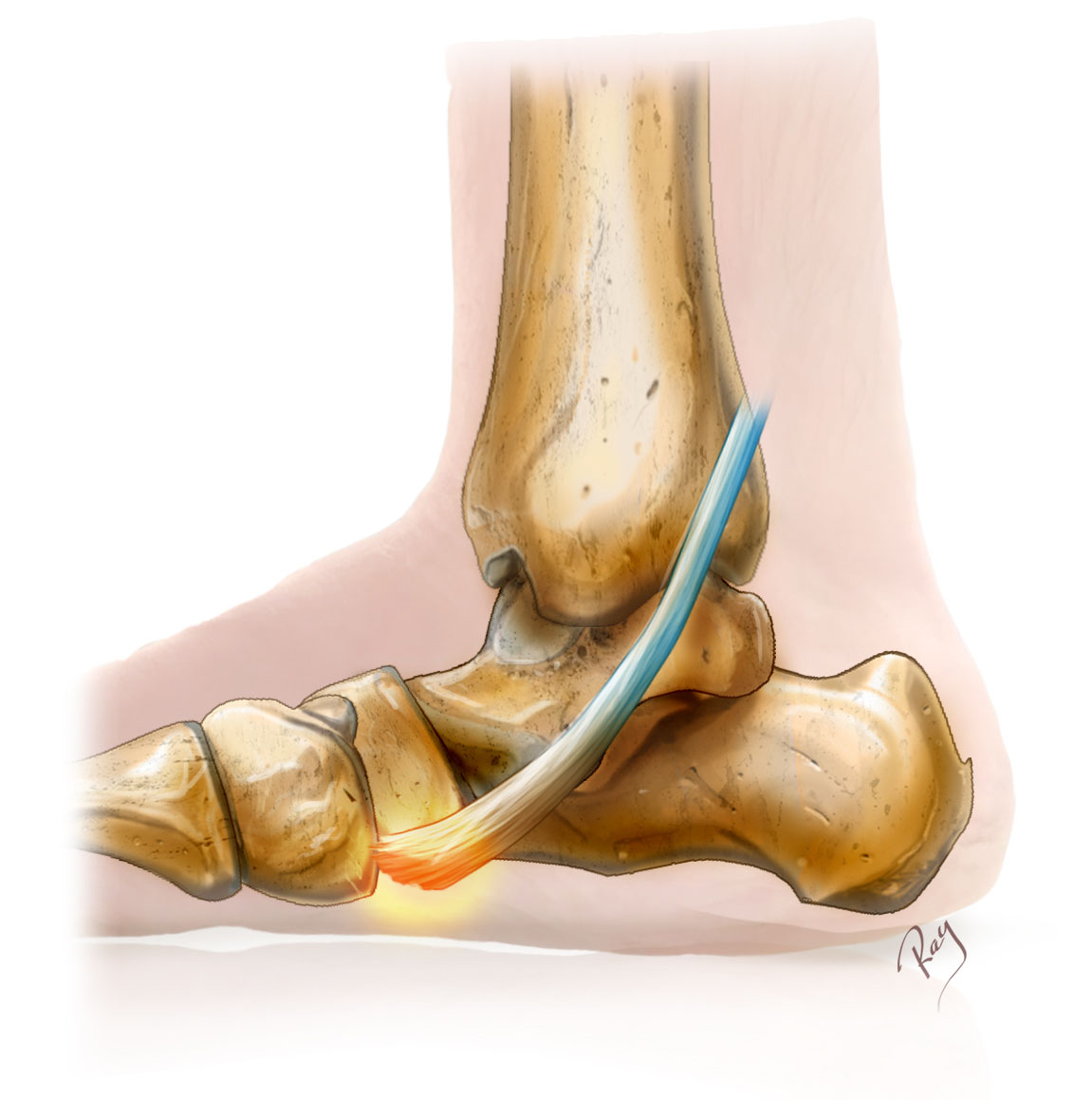
Injury to the posterior tibial tendon (tendinopathy). Observe the position of the painful insertion, on the inner and lower part of the foot.
With the progression of the condition, the tendon will lose its efficacy and sometimes even tear. When this happens it can no longer support the foot and a flatfoot will develop, which quickly becomes painful. Moreover, the heel tips outward, the foot arch collapses and the forefoot deviates outwards.
When should you consult a specialist?
Flatfoot in infants is a common reason for consulting in paediatrics. Parents are usually reassured about the natural occurrence of this type of deformity.
However, the adult-acquired form causes pain and damage, which can be permanent, and a specialist should be consulted. In fact, untreated pathological flatfoot can cause severe deformities which can sometimes be very difficult to treat or may be irreversible.
The diagnosis is made by a specific clinical examination, radiological assessment and sometimes by an ultrasound or MRI. Triggering factors should be analysed such as weight gain, diabetes, history of trauma, anatomical malformations (coalitions, etc.), some drug treatments or incorrect footwear.
